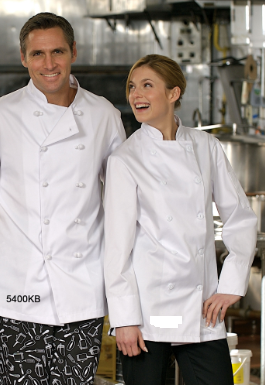When it’s time to eat, you need the proper tools to prepare your meal in the oven or on the stove. Pots and pans are the most important cookware that you will need for this purpose. There’s a large variety of pots and pans. Below you will find information on the different kinds of cookware, how to choose the right cookware for you, as well as some useful accessories.
Types of Pots
Pots have higher walls that hold water or sauces. Here’s a list of the different kinds of pots:
Sauce Pot
Sauce pots are ideal for slow cooking dishes like stews and soups because of their wide bottom area for maximum heat conduction. Most sauce pots will have two handles for easy lifting and pouring. Sometimes they come with only one long handle.
Dutch Oven Pot
A dutch oven isa large cast-iron pot that is used for cooking large meat dishes that require a lot of heat. You can also use these pots for making soups, roasts, casseroles, and even baking bread. Pretty much any dish can be made with a dutch oven. The French Oven is a type of dutch oven that has an interior enamel. This means seasoning is not required.
Stock Pot
Stock pots are large, deep pots with thick bottoms for a slow simmer. These are perfect for liquids that do not need to be super close to the heat. The tall height of a stockpot allows liquids to bubble up through the ingredients, increasing the flavor. The large size is good for cooking bigger meals.
Brazier/Rondo
Pot Brazier pots have a wide heating surface, perfect for slow cooking meats and vegetables. While the food cooks, the liquid adds lots of flavor. These can also be used with tapered sauce pans for melting butters, heating sauces or for blanching vegetables.
Pasta Pot
Some pasta pots have a perforated locking lid to easily pour the water out and leave the pasta remaining. Other pots come with a metal strainer which sits inside of a large pot. When cooking is finished, you lift the metal strainer containing the boiled pasta.
Steamer
A
steamer has a metal screen that sits at the bottom of the bot above water. As the water heats, the steam cooks whatever you put inside of it.
Double boilers
Double boilers work similar to steamers, except the insert is a pot without holes.These are
good for jobs like melting chocolate.
Special Purpose Pots
There are some uncommon, but not totally unnecessary, types of pots for the kitchen. Though dutch ovens and slow cookers do the trick just fine, you also have the option to buy pots specifically for casseroles. Another pot made for a certain purpose is the milk warmer, which carefully heats up milk on the stove.
Types of Pans
Pans tend to have lower walls or none at all. They are used for flipping and rotating food easily. Here’s a list of the different kinds of pans:
Fry Pan
These pans have curved walls for easy stirring and to prevent any steam from forming. They are ideal for frying, scrambling, and searing foods. Curved side walls allow for easy stirring and sliding food out of the pan.
Fry pans can reach a ranch of temperatures depending on the material they are made from. They also come in many sizes.
Sauté Pan
Sauté pans have wide bottoms and works best for jobs like sautéing, poaching, and stir frying. Unlike the rounded sides of fry pans, sauté pans have straight sides to help heat the food entirely while keeping everything contained. A skillet is a sauté pan with low-rise walls that are slanted. Sauté pans are also a bit deeper, meaning they can be used for more than just sautéing. Other uses include deep-frying and searing.
Sauce pan
Saucepans have a rounded bottom and tall, straight sides. They can be used with or without a lid to control evaporation and accelerate cooking. They are also good for reheating leftovers and preparing grains. Tapered saucepans have a smaller bottom for less heat exposure. They are a great to use when you want to cook at lower temperatures for a longer amount of time.
Wok
A wok is similar to a frying pan, but the bottom surface area is smaller for high heat concentration. The walls also rise higher and are slanted. Most people use woks to cook rice and vegetables when making dishes like stir fries.
Roasting Pan
When you want to roast a large piece of meat, use a roasting pan. A roasting pan has a rectangular shape and includes a rack at the bottom to suspend the meat. Its low sides allow the heat of the oven to evenly cover as much food as possible. The handles of the pan make for easy loading and unloading, as well as convenient transportation.
Paella Pan
This kind of pan is compatible with all heat sources. It has handles to make movement easy and its sloping sides cook foods evenly.
Griddles
Griddles are a large flat surface that is perfect for making a big breakfast. Eggs, pancakes, bacon, and any other delicious food can be put on a griddle. They are pretty much large frying pans without the handle. Electric griddles have their own heat source, while stock-top griddles are placed on the stove.
Other Types of Pans:
- Grill Pans
- Omelet Pans
- Brasier Pans
Choosing the right cookware
If you are wondering which cookware you should buy, always consider these things:
- Purpose: What type of dish will you be cooking? This is the first step in knowing which pot or pan to utilize because certain foods cook better in certain cookware. Also, some foods need more time to cook, so you will need the right tool for that as well.
- Size: What is the serving size of your dish? If it’s just a meal for yourself, you will need something smaller compared to if you were cooking for your entire family.
- Material: The kind of material the cookware is made of can affect factors such as taste, cooking time, and how much a food will stick to the pot or pan. The most common materials include cast iron, stainless steel, and copper. There’s also aluminum, glass, and ceramic cookware.
Here’s a quick list of some pros and cons for each material:
Cast Iron
- Cast iron is durable and conducts heat well, but it is very heavy and can rust if not taken care of properly.
Stainless Steel
- This material is also durable and doesn’t cause food to have a metallic taste. However, it is not the best heat conductor.
Aluminum
- Aluminum produces heat really well and it is lightweight. On the flip side, it is prone to discoloration and can leave food with a bitter taste.
Glass
- You can watch your food as it cooks if you use glass cookware. However, that food is also more likely to stick and possibly burn in the glass.
Ceramic
- Ceramic is best used for dishes that need to be cooked slowly at a constant temperature. A downside to using cookware made of this material is that it is very fragile.
Copper
-
Copper is the best heat conductor and it visually appealing. Because of this, it tends to be more expensive.
Cookware Accessories
Now that we went through the types of cookware and their uses, let’s explore some accessories that you may use to aid in your cooking.
Pasta Strainer
Pasta is poured into a
strainer then placed into a water-filled pot. This prevents the pasta from sticking to the bottom of the pot. Also, when everything is done boiling, it can be easily drained. Some pots come with built-in strainers either within the lid or as an additional bow to be placed inside.
Wok Ring
A wok ring is a vented ring that is placed above a burner to support the wok. You can use it to concentrate and direct heat.
Steamer Basket
These baskets are placed in a stockpot containing a small amount of boiling water. Their purpose is to cook foods using steam.
Splatter Screen
Placing a mesh screen over your food allows it to breathe while making sure oil and grease do not splash all over the place. This is very helpful when you are frying foods such as chicken, since the hot oil will not be able to pop up and potentially burn you.
Simmer Ring
Simmer rings sit underneath cookware to help it evenly distribute heat. They also reduce liquids from boiling over.
Handle Grip
Need extra assistance when handling a pot or pan? A handle grip provides comfort and support when touching cookware. It is heat resistant and very easy to clean.
Summary
There are various cookware to choose from depending on the meal you wish to create, the size of the meal, and material which the cookware is made of. There are also accessories to make cooking even safer and easier. We hope that our lists were very informative and helpful to you.




